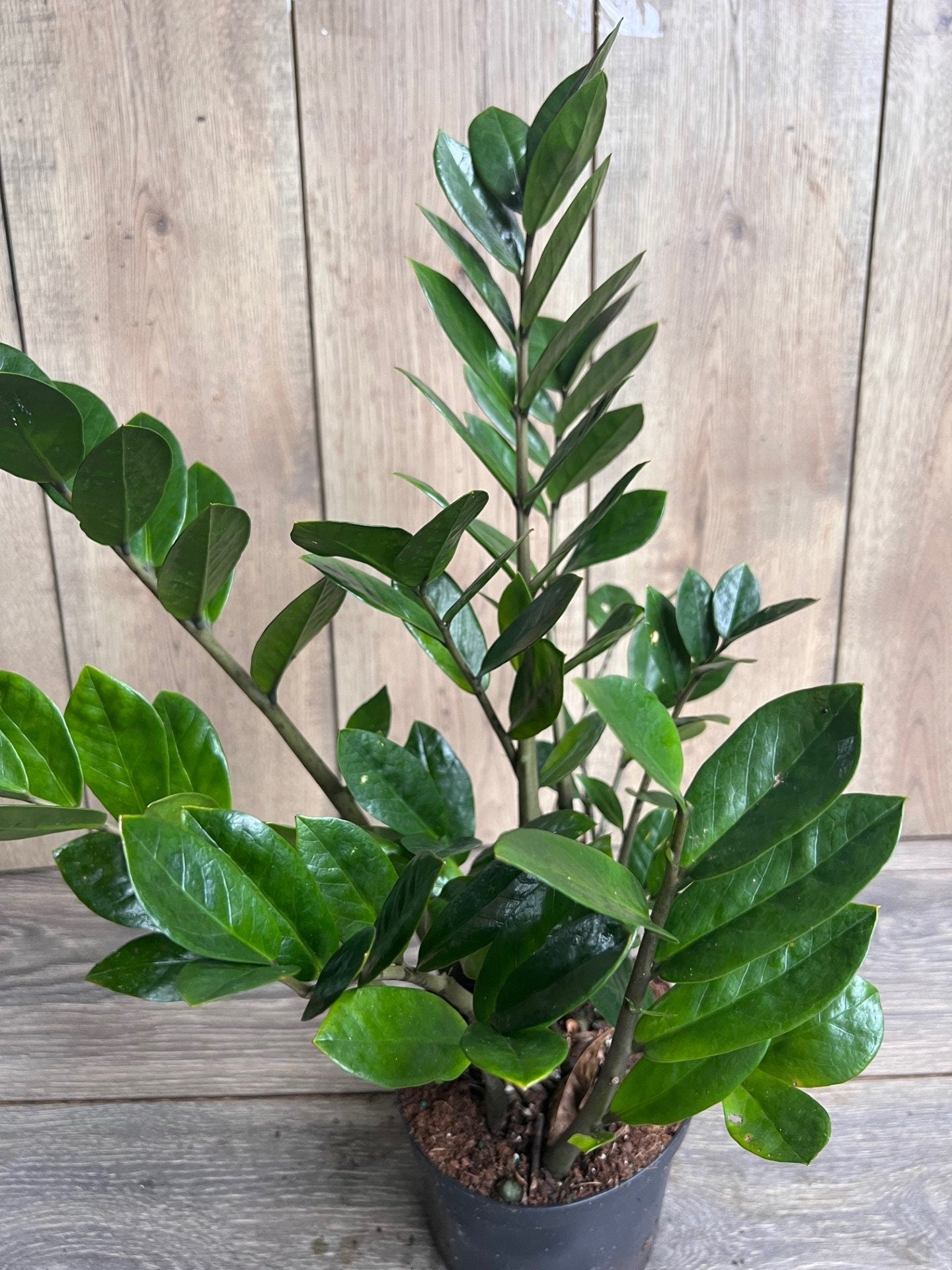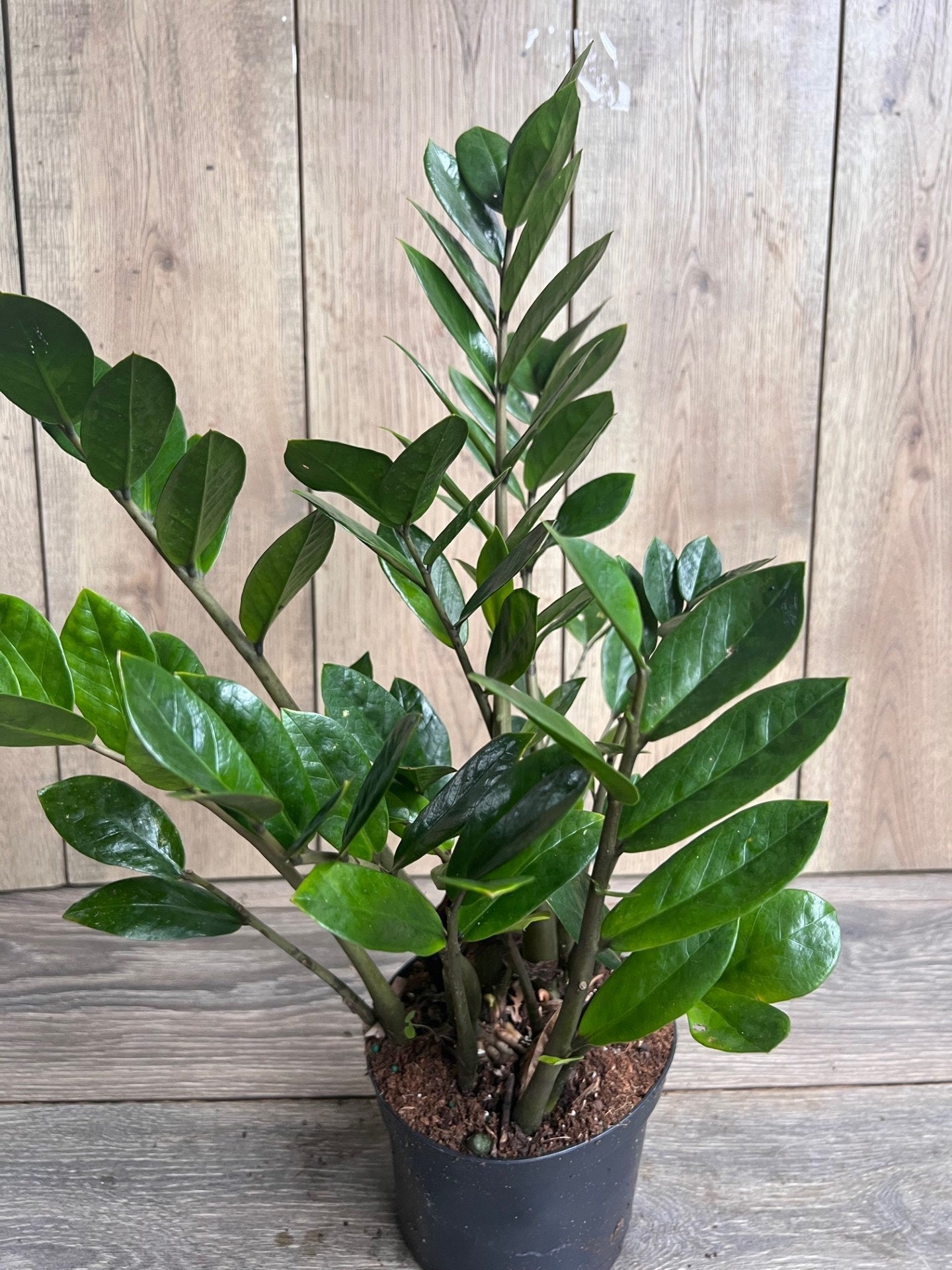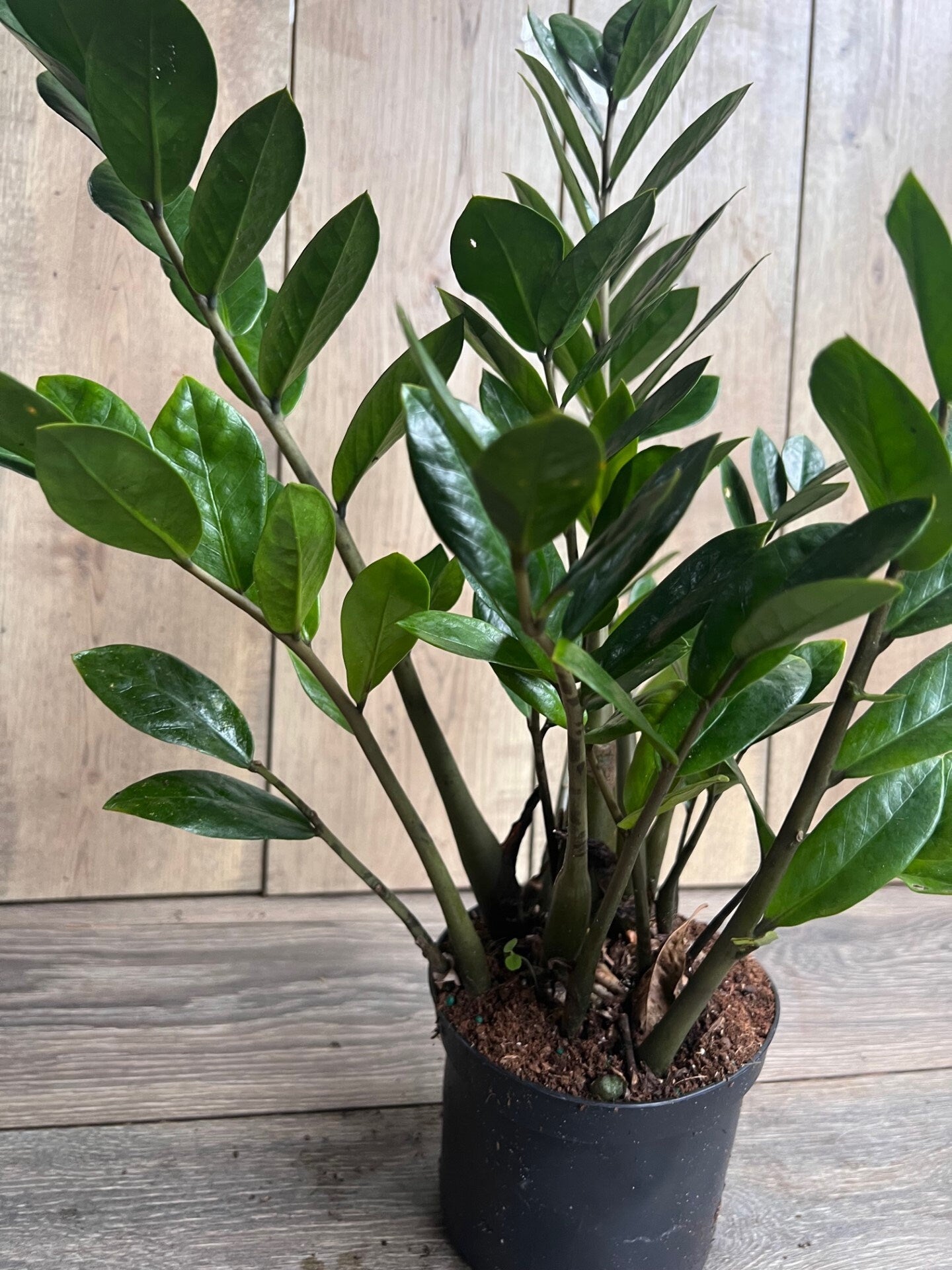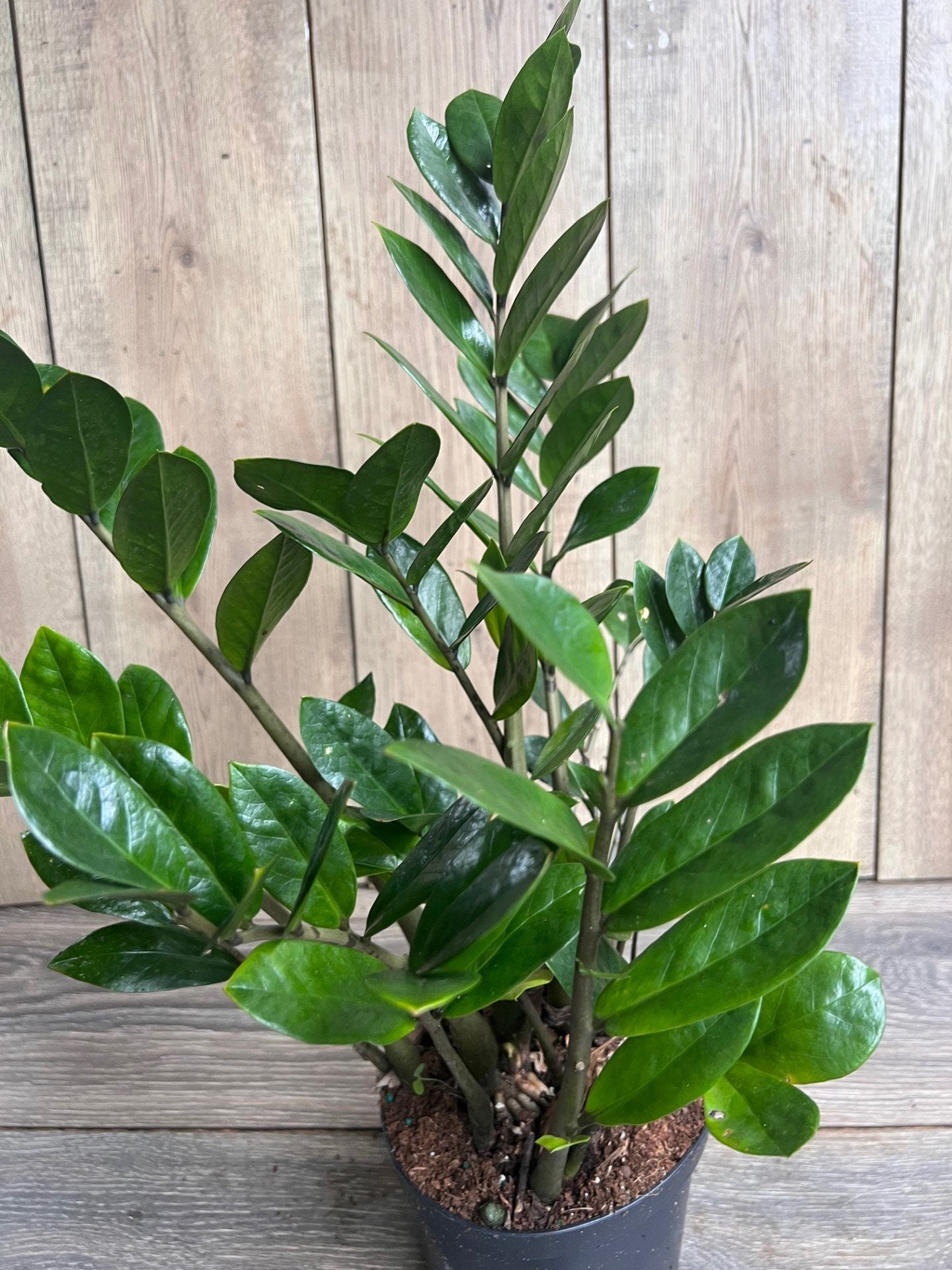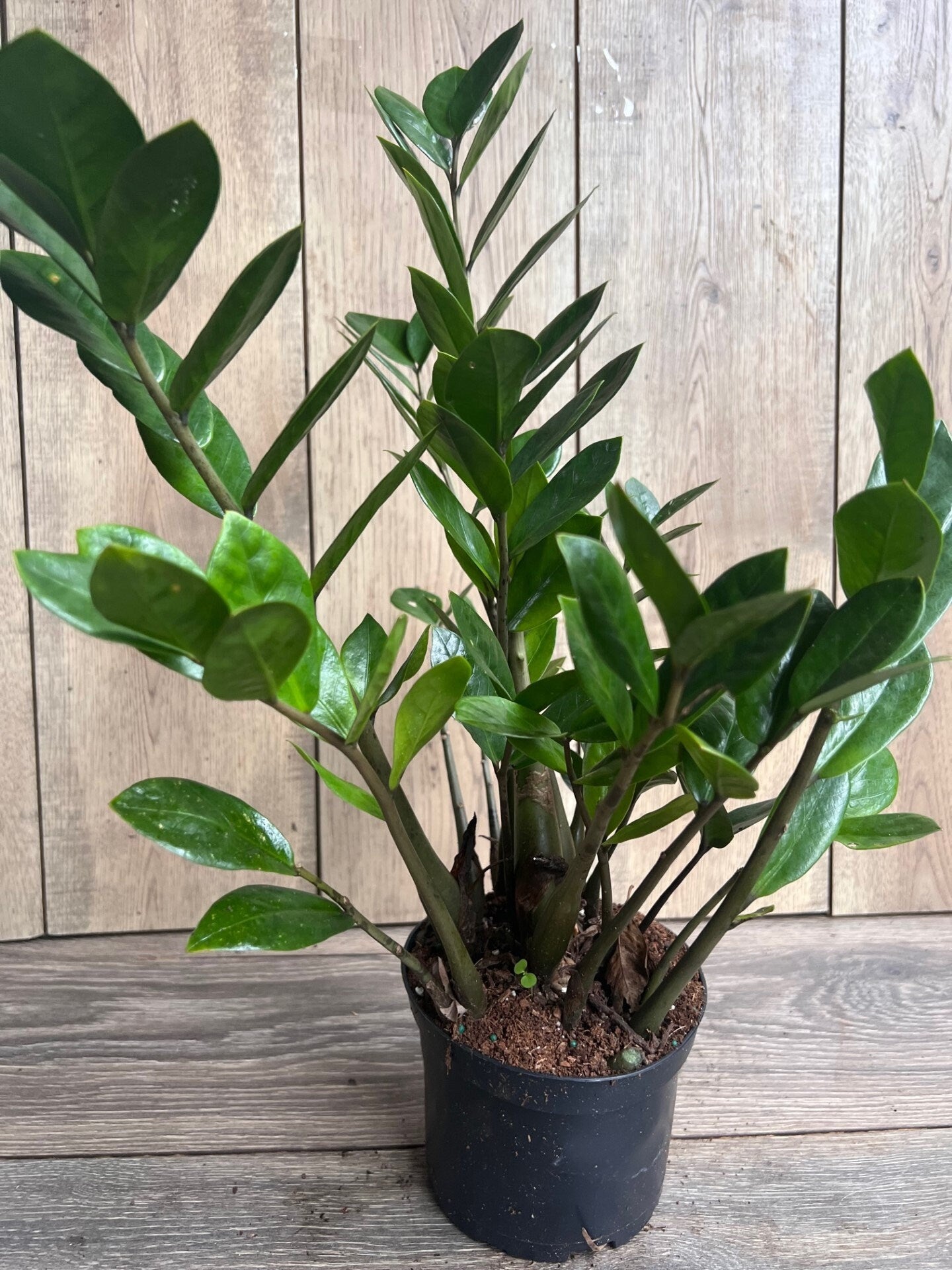Zamioculcas Zamiifolia , ZZ Plant, in 6" Pot
Zamioculcas Zamiifolia , ZZ Plant, in 6" Pot
Couldn't load pickup availability
Note: You will receive zz plants in 6" pot similar to the pictures
Zamioculcas zamiifolia, commonly known as the ZZ plant, is a hardy, low-maintenance houseplant native to East Africa. It is renowned for its attractive, glossy, dark green leaves and its ability to thrive in low-light conditions, making it a popular choice for indoor spaces with minimal natural light. The ZZ plant is highly drought-tolerant due to its thick, waxy stems and rhizomes, which store water, allowing it to go for extended periods without watering. It can grow up to 3-4 feet tall and has a striking, upright growth habit. Easy to care for, it can withstand neglect, tolerates a range of temperatures, and is resistant to most pests. This makes it a great choice for both beginner and experienced gardeners, especially in offices, homes, or places where attention to plants is limited.
Zamioculcas zamiifolia, commonly known as the ZZ plant, is an incredibly hardy, low-maintenance houseplant that's perfect for beginners or anyone with a busy lifestyle. Here's a comprehensive care guide to ensure your ZZ plant thrives:
1. Light
ZZ plants are very adaptable to varying light conditions. They thrive in bright, indirect light but can also tolerate low light very well. This makes them ideal for areas with minimal natural light, such as offices or bathrooms. Avoid placing your ZZ plant in direct sunlight, as it can scorch the leaves and cause them to yellow.
2. Watering
ZZ plants are highly drought-tolerant due to their thick, waxy stems that store water, allowing them to go for weeks without needing water. The key is to let the soil dry out between waterings. Water your ZZ plant when the top 1-2 inches of soil are dry to the touch, usually every 2-3 weeks, depending on the season and indoor climate. In winter, you can reduce watering even further. Overwatering is the biggest threat, so be sure the pot has good drainage and never let the plant sit in standing water, as this can lead to root rot.
3. Soil
ZZ plants prefer well-draining soil. A general-purpose potting mix works fine, but it's best to use a cactus or succulent mix, which provides better drainage. You can also mix in some perlite or sand to ensure the soil drains well and doesn’t stay too moist, as ZZ plants are susceptible to root rot in soggy conditions.
4. Temperature
ZZ plants prefer warm environments and do best at 65°F to 75°F (18°C to 24°C). They can tolerate a range of temperatures but should be kept away from cold drafts or temperatures below 50°F (10°C). Avoid placing them near air conditioners, heaters, or drafty windows, as temperature fluctuations can stress the plant.
5. Humidity
ZZ plants are not particularly fussy about humidity and can adapt to average indoor humidity levels. They do well in dry indoor air, making them perfect for homes and offices with central heating or air conditioning. If the air is very dry, occasional misting or placing the plant on a humidity tray can help, but it’s generally not necessary.
6. Fertilization
Feed your ZZ plant with a balanced, diluted liquid fertilizer during the growing season (spring and summer). Apply fertilizer every 4-6 weeks to support healthy growth. Avoid over-fertilizing, as this can cause the plant to grow too quickly or produce weak, leggy growth. In the fall and winter, when the plant is not actively growing, you can stop fertilizing.
7. Pruning
ZZ plants are slow growers and don’t require much pruning. You can remove yellowing or dead leaves to keep the plant looking tidy. If any stems become too long or leggy, you can prune them back, but ZZ plants tend to maintain a compact shape without much intervention. Pruning will also help encourage new growth and prevent the plant from becoming too top-heavy.
8. Repotting
ZZ plants grow slowly, so they don’t need frequent repotting. Repot your ZZ plant every 2-3 years or when it becomes root-bound. Choose a pot that’s 1-2 inches larger than the current one and ensure it has drainage holes to prevent water from sitting at the bottom. When repotting, use fresh, well-draining soil to promote healthy root growth.
9. Pests and Diseases
ZZ plants are relatively pest-resistant, but they can occasionally attract mealybugs, spider mites, or scale. Inspect the leaves regularly for signs of pests and treat any infestations with insecticidal soap or neem oil. ZZ plants are also prone to root rot if overwatered, so always ensure the soil has good drainage and avoid letting the plant sit in water.
ZZ plants are incredibly forgiving and adaptable, making them a perfect choice for those new to plant care or anyone looking for a low-maintenance indoor plant. By providing proper light, watering only when needed, and ensuring good drainage, your ZZ plant will thrive and reward you with its glossy, waxy leaves and resilience to neglect. Whether you're in an office or a home, the ZZ plant is a beautiful, virtually care-free addition to any space.
Share
